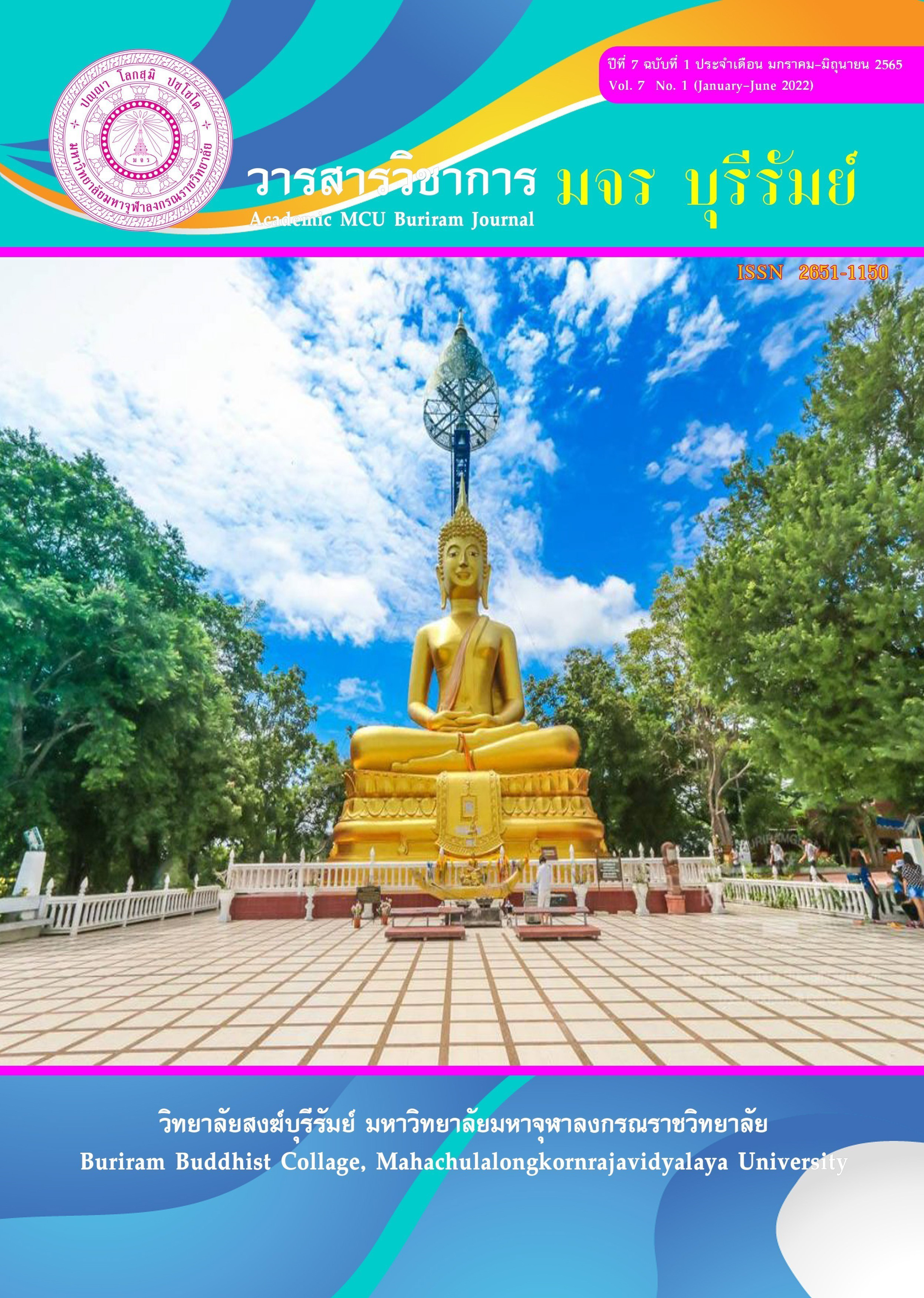Sīla In Visuddhimagga as a Reflection of the Monks Way of Life in Buddhism
Keywords:
Sīla, Visuddhimagga, Reflection of the MonksAbstract
This academic article is on the topic of keeping the precepts of monks in the discipline that the Buddha had prescribed. The morality of pure conduct is classified as the sacrament of purity of morality, which is the essential basis of the monks for conducting oneself in purity so that monks can coexist in unity, bring beauty, order, and make faith. In Visuddhimagga, it is shown that one who is immoral, is not pleased with gods and men, is untrained by fellow virgins, who suffers because of the insults of immorality, one who is zealous for praising of the virtuous, for being immoral is one whose complexion is dull like the bark of a tree, one who has a rough touch because it brings misery to those who have taken his example for a long time. Reflection of the monks who rely on the religion by being ordained as monks for various reasons, but over time, may not be interested in the practice of purification of defilement, to become a common sin problem of monks, it is necessary to study and find knowledge in the Dharma practice in the discipline so that there will be no disgrace to the monks, it will not be a danger for monks in Buddhism, should not encourage the destruction of Buddhism by spreading the bad behavior of monks to the public too much. The role of monks has changed over time, temples used to be a source of both secular and dharma knowledge, later the role of monks in secular matters was reduced by economic and social conditions to the effect of Buddhism. It is unsustainable and may cause the monks to vanish faster than it is now. All Buddhist monks must purify the 227 precepts, spread the teachings of the Lord Buddha throughout the world, and make Buddhism flourish forever.
References
มหาจุฬาลงกรณราชวิทยาลัย. (2539). พระไตรปิฎกภาษาไทย ฉบับมหาจุฬาลงกรณราชวิทยาลัย. กรุงเทพมหานคร: โรงพิมพ์มหาจุฬาลงกรณราชวิทยาลัย.
มหามกุฏราชวิทยาลัย, (2523) วิสุทธิมรรคแปล ภาค 1 ตอน 1. กรุงเทพมหานคร: โรงพิมพ์มหามกุฏราชวิทยาลัย.
ราชบัณฑิตยสถาน. (2548). พจนานุกรมศัพท์ศาสนาสากล อังกฤษ-ไทย ฉบับราชบัณฑิตยสถาน.
ธรรมปราโมทย์. (2535). รวบรวม. บวชจริง เรียนจริง ปฏิบัติจริง ได้ผลจริง คู่มือสำหรับพระแท้. พิมพ์ครั้งที่ 3. กรุงเทพมหานคร: ลิเบอร์ตี่ เพรส.
ปัญญา ใช้บางยาง. (2548). ธรรมาธิบาย หลักธรรมในพระไตรปิฎก. กรุงเทพมหานคร: โรงพิมพ์ธรรมสภา.
วศิน อินทสระ. (2557). สาระสําคัญแห่งวิสุทธิมรรค. พิมพ์ครั้งที่ 5. กรุงเทพมหานคร: โรงพิมพ์เม็ดทราย.
พระธรรมธีรราชมหามุนี (โชดก ญาณสิทธิ). (2550). คําบรรยายวิปัสสนากรรมฐาน.กรุงเทพมหานคร: บริษัท ประยูรวงศ์พริ้นติ้ง จํากัด.
พระพุทธโฆสเถระ รจนา. (2555). คัมภีร์วิสุทธมรรค. สมเด็จพระพุฒาจารย์ (อาจ อาสภมหาเถร) แปลและเรียบเรียง. พิมพ์ครั้งที่ 10. กรุงเทพมหานคร: โรงพิมพ์ บริษัท ธนาเพรส จำกัด.
พระพุทธโฆสเถระ. (2556). คัมภีร์วิสุทธิมรรค. แปลและเรียบเรียงโดย สมเด็จพระพุฒาจารย์ (อาจ อาสภมหาเถร). พิมพ์ครั้งที่ 11. กรุงเทพมหานคร: โรงพิมพ์ บริษัทธนาเพรส จำกัด.
พระพรหมคุณาภรณ์(ป.อ.ปยุตโต). (2555). พุทธธรรมฉบับปรับและขยาย. พิมพ์ครั้งที่ 11 .กรุงเทพมหานคร: โรงพิมพ์ บริษัท ผลิธัมม์ จำกัด.
พระพรหมคุณาภรณ์(ป.อ.ปยุตโต). (2549). สุขภาวะองค์รวมแนวพุทธ. พิมพ์ครั้งที่ 12 .กรุงเทพมหานคร: ชุมชนสหกรณ์การเกษตรแห่งประเทศไทย จำกัด.
พระราชญาณวิสิฐและคณะ. (2553). คู่มือการศึกษาสัมมาปฏิบัติไตรสิกขา. พิมพ์ครั้งที่ 6. นครปฐม: โรงพิมพ์ บริษัทเพชรเกษมพริ้นติ้ง กรุ๊ป จำกัด.
พระราชธรรมนิเทศ (ระแบบ ฐิตญาโณ). (2534). มองเขามองเรา. พิมพ์ครั้งที่ 5. กรุงเทพมหานคร: พรศิวการพิมพ์.
พระมหาทองหล่อ ฐานิสฺสโร (สินกระสัง). (2554). การศึกษาวินัยชาวพุทธในการพัฒนาชีวิตให้เป็นสุข. วิทยานิพนธ์พุทธศาสตร์มหาบัณฑิต. บัณฑิตวิทยาลัย: มหาวิทยาลัยมหาจุฬาลงกรณราชวิทยาลัย.
สุชีพ ปุญญานุภาพ . (2539). พระไตรปิฎกฉบับสำหรับประชาชน. กรุงเทพมหานคร: มหามกุฏราชวิทยาลัยในพระบรมราชูปถัมภ์.
Downloads
Published
How to Cite
Issue
Section
License
Copyright (c) 2022 Academic MCU Buriram Journal

This work is licensed under a Creative Commons Attribution-NonCommercial-NoDerivatives 4.0 International License.
ทัศนะและความคิดเห็นที่ปรากฏในบทความวารสารฉบับนี้ถือเป็นความรับผิดชอบของผู้เขียนบทความนั้น ไม่ถือเป็นทัศนะและความรับผิดชอบของบรรณาธิการ





